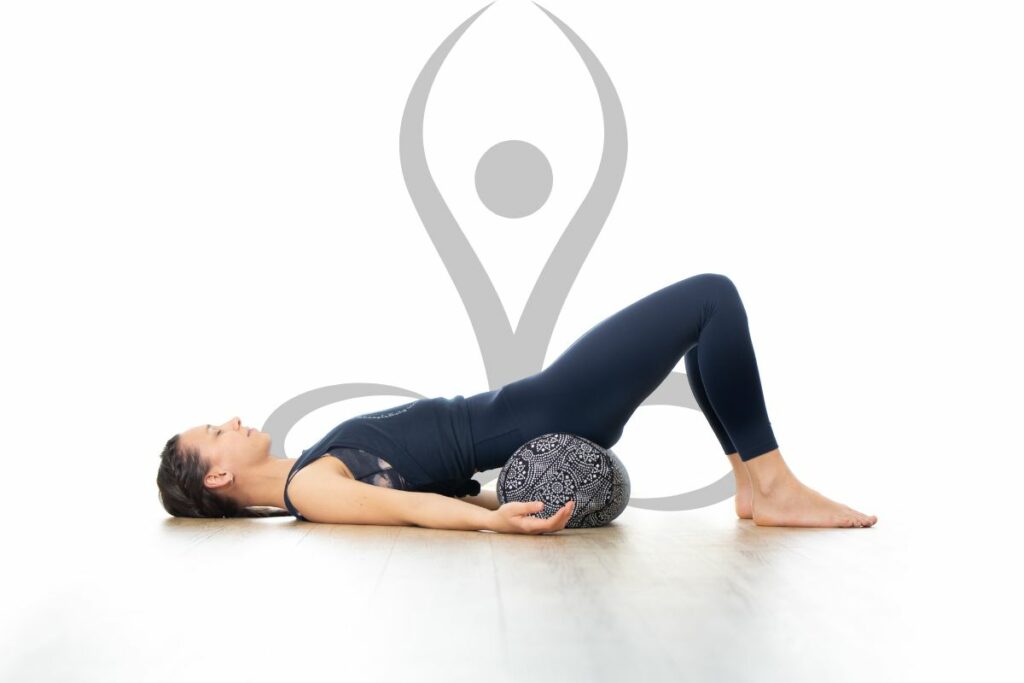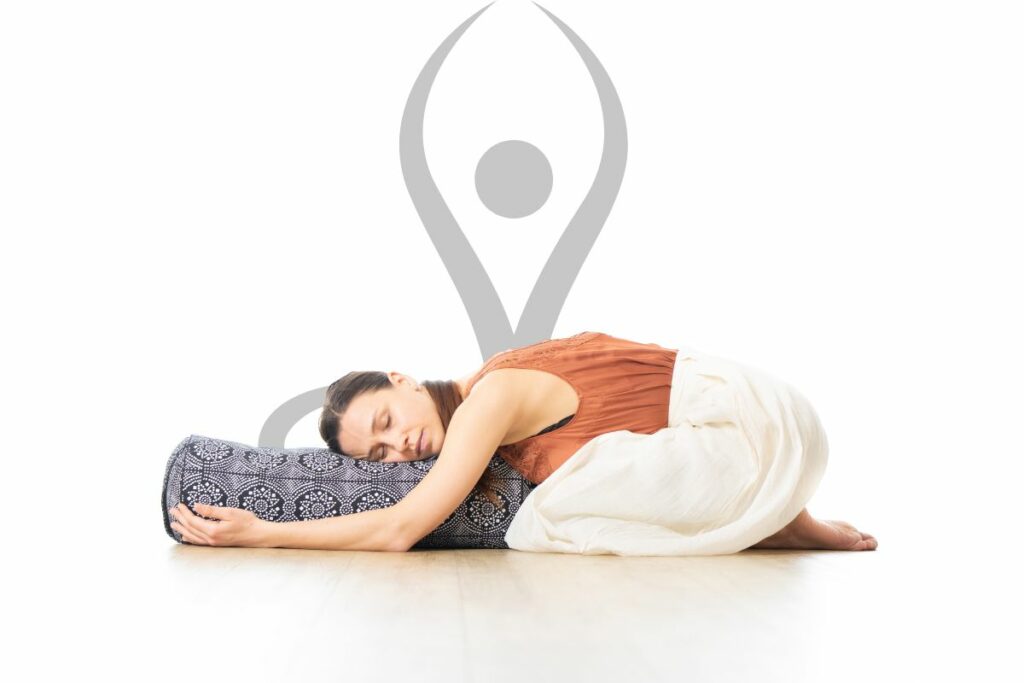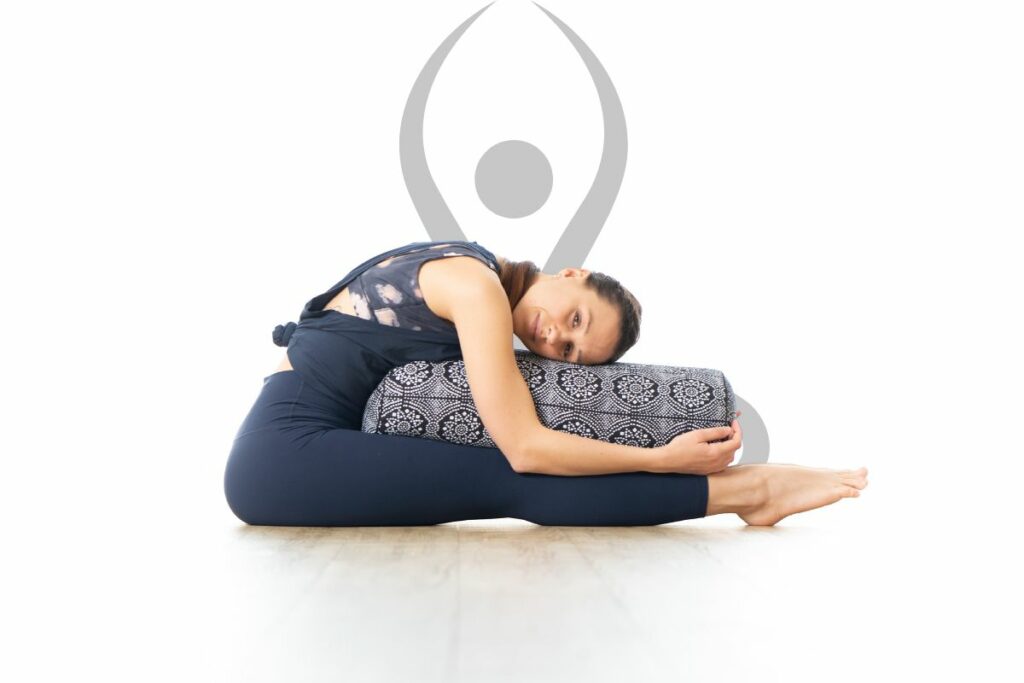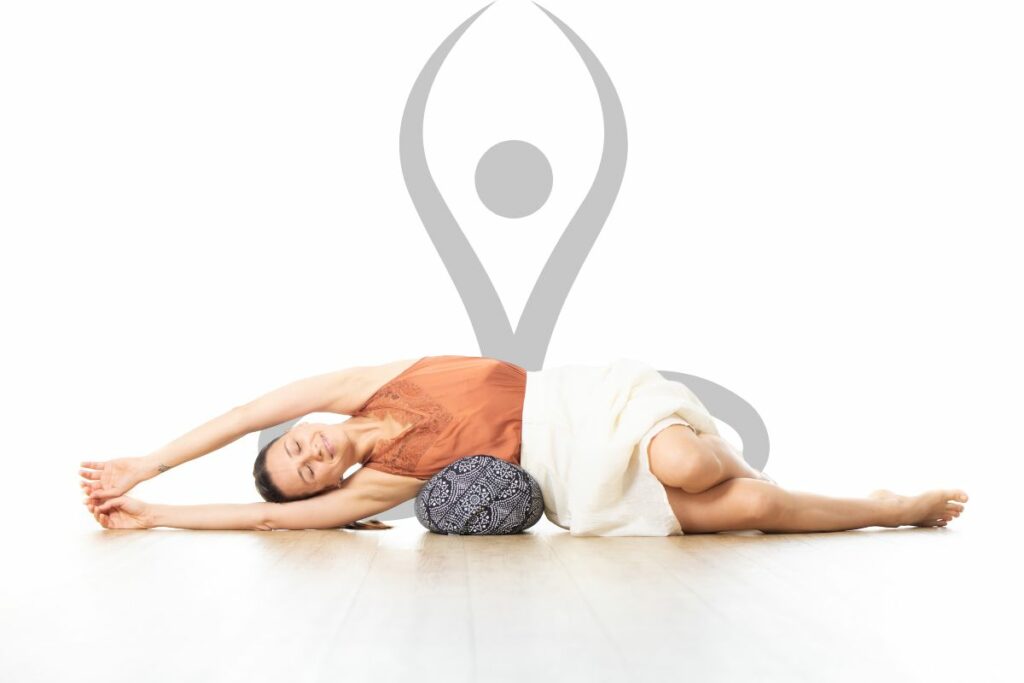Restorative Yoga for Healing and Relaxation
Ever felt so stressed or physically drained that you just needed a break from it all? We’ve all been there—those days when you’re running on empty, and it feels like the weight of the world is pressing down on your shoulders.
Whether it’s work, family responsibilities, or just the hustle and bustle of everyday life, stress can take a serious toll on your body and mind.
Restorative yoga might be just what you need!
The practice encourages mindfulness and present-moment awareness, which can significantly reduce stress and anxiety.
Related article: Exploring Different Styles of Yoga: Which One Suits You Best?

This post may contain affiliate links, which helps keep this content free. Please read our disclosure for more info.
What is Restorative Yoga?
Restorative yoga is a form of yoga that focuses on deep relaxation and recovery. This practice is unique because it’s not about pushing your limits or breaking a sweat; instead, it’s all about letting go and allowing your body to rest and renew.
Unlike more dynamic styles like Vinyasa or Ashtanga, restorative yoga emphasizes long-held poses supported by props such as bolsters, blankets, and blocks.
These props are used to fully support your body, allowing you to relax completely without straining any muscles.
The primary goal of restorative yoga is to provide a space where your body can enter a state of deep relaxation, promoting healing and stress relief.
By holding poses for extended periods—typically anywhere from 5 to 20 minutes—you give your body the time it needs to release deeply held tension and to rejuvenate.
This practice can be incredibly beneficial for those recovering from injury, dealing with chronic pain, or simply looking to manage stress and improve overall well-being.
Restorative yoga was developed by B.K.S. Iyengar, a renowned yoga teacher from India, in the 20th century. Iyengar’s method was revolutionary because it made yoga accessible to everyone, regardless of their physical condition.
He introduced the use of props to support the body in various poses, ensuring that even those with physical limitations could experience the benefits of yoga.
This approach allowed practitioners to maintain correct alignment and stay in poses longer, which is essential for the restorative effects.
Over time, Iyengar’s method evolved into what we now know as restorative yoga, with a distinct focus on relaxation and rejuvenation.
The influence of Iyengar’s teaching can be seen in the emphasis on precise alignment and the extensive use of props. This method is particularly effective because it allows the body to relax into the poses, reducing the stress on muscles and joints and promoting a state of deep rest.
Benefits of Restorative Yoga

Restorative yoga offers a wide range of benefits, making it a valuable practice for enhancing overall well-being.
Physical Benefits:
Restorative yoga helps to relax muscles, improve flexibility, and reduce pain. The extended holds in each pose allow your body to gently stretch and release tension, which can be particularly beneficial for those with tight muscles or chronic pain.
Restorative yoga provides a gentle, passive stretch that can help increase your range of motion over time. The use of props ensures that your body is fully supported, which helps to prevent strain and injury.
By focusing on deep relaxation, restorative yoga can also improve circulation and promote better alignment, contributing to overall physical health.
Mental Benefits:
Restorative yoga is incredibly effective at reducing stress and anxiety, promoting a sense of calm and well-being.
The slow pace and deep breathing techniques used in restorative yoga can help quiet the mind, allowing you to let go of worries and mental clutter.
This practice encourages mindfulness, helping you to stay present and focused on the moment. The meditative aspects of restorative yoga can improve mental clarity and concentration, making it easier to manage daily stressors and maintain a positive outlook.
By regularly engaging in restorative yoga, you can develop better stress management skills and cultivate a greater sense of inner peace.
Emotional Benefits:
Restorative yoga provides emotional healing and increased mindfulness. By creating a sense of safety and relaxation, restorative yoga can help you process and release emotional stress.
Holding poses for extended periods allows you to connect with your emotions in a supportive environment, fostering self-awareness and acceptance.
This practice can be particularly helpful for those dealing with trauma or emotional turmoil, as it offers a gentle way to explore and understand your feelings.
The nurturing nature of restorative yoga can help you build emotional resilience and develop a more compassionate relationship with yourself.
In addition to these specific benefits, restorative yoga can also improve sleep quality, boost the immune system, and enhance overall well-being.
By incorporating restorative yoga into your routine, you can create a balanced practice that supports both your body and mind.
Key Restorative Yoga Poses

These key restorative yoga poses will help you begin your journey to deep relaxation and healing:
Child’s Pose (Balasana):
Kneel on the floor, sit back on your heels, and stretch your arms forward, resting your forehead on the mat. Place a bolster under your chest for added support.
This pose gently stretches the hips, thighs, and ankles while calming the mind. It’s a comforting position that promotes deep relaxation and helps release tension from the back and shoulders.
Supported Bridge Pose (Setu Bandhasana):
Lie on your back with your knees bent and feet flat on the floor. Place a block or bolster under your sacrum for support, which allows your back to relax completely.
This pose opens the chest and shoulders, and gently stretches the spine, relieving any accumulated stress in these areas. It also stimulates the thyroid and lungs, promoting better breathing and circulation.
Legs-Up-The-Wall (Viparita Karani):
Sit sideways against a wall, then swing your legs up the wall as you lower your back to the floor. Rest your arms at your sides, palms up.
This pose is excellent for reducing fatigue and swelling in the legs and feet. It also calms the nervous system and helps alleviate symptoms of anxiety and stress.
By reversing the effects of gravity, it aids in circulation and provides a gentle stretch for the back and hamstrings.
Reclining Bound Angle Pose (Supta Baddha Konasana):
Lie on your back, bring the soles of your feet together, and let your knees drop open to the sides. Use bolsters or blankets under your knees for support.
This pose opens the hips and groin, promoting relaxation and reducing stress. It’s also known for helping with digestive issues and menstrual discomfort.
Supported Corpse Pose (Savasana):
Lie on your back with your legs extended and slightly apart, arms at your sides, palms up. Place a bolster under your knees and a folded blanket under your head for comfort.
This ultimate relaxation pose allows the entire body to release and rest, promoting deep healing and rejuvenation.
It’s a perfect way to end your restorative yoga session, allowing you to fully absorb the benefits of your practice.
For each pose, ensure that your body is fully supported by props, allowing you to hold the pose comfortably for several minutes.
This extended duration helps to maximize the benefits, promoting deep relaxation and releasing tension from the body.
Remember to focus on your breath, allowing it to guide you into a state of calm and tranquility.
Creating a Restorative Yoga Routine

Creating a restorative yoga routine can be simple and enjoyable, providing a sanctuary of calm and relaxation in your daily life. Here’s how to set up an effective and soothing practice:
Warm-Up: Begin with gentle stretches to prepare your body for the restorative poses. Simple movements like neck rolls, shoulder shrugs, and gentle spinal twists can help to loosen up your muscles and joints.
Focus on moving slowly and mindfully, paying attention to how your body feels. This warm-up phase is crucial for easing into a more relaxed state and preventing any stiffness or discomfort during your practice.
Poses: Choose a few restorative poses and hold each for 5-10 minutes. Depending on your needs and preferences, you can select poses that target specific areas of your body or focus on overall relaxation. Here are a few suggestions:
- Child’s Pose (Balasana): A gentle stretch for the back and shoulders.
- Supported Bridge Pose (Setu Bandhasana): Opens the chest and relaxes the spine.
- Legs-Up-The-Wall (Viparita Karani): Eases fatigue and promotes circulation.
- Reclining Bound Angle Pose (Supta Baddha Konasana): Opens the hips and reduces stress.
- Supported Corpse Pose (Savasana): Complete relaxation and rejuvenation.
Use props like bolsters, blankets, and blocks to support your body in each pose, ensuring you can hold them comfortably for the duration.
The longer holds allow your body to fully relax and release tension, promoting deep healing and rest.
Cool-Down: Finish your routine with a relaxing pose like Savasana (Corpse Pose). This final pose allows your body to integrate the benefits of your practice and enter a state of profound relaxation.
Lie on your back with your legs extended and slightly apart, arms at your sides, palms up. Use a bolster under your knees and a folded blanket under your head for added comfort.
Focus on your breath and allow your entire body to relax completely.
Creating a Peaceful Practice Space: Set up a peaceful practice space at home to enhance your restorative yoga experience. Here are some tips:
- Dim Lighting: Soft lighting helps create a calming atmosphere. Consider using candles or a dimmable lamp.
- Calming Music: Play gentle, soothing music to help you relax. Nature sounds or instrumental tracks can be particularly effective.
- Comfortable Props: Ensure you have all the props you need, such as bolsters, blankets, blocks, and an eye pillow.
- Quiet Environment: Choose a space where you can practice without interruptions. Turn off your phone and let others in your household know you need some quiet time.
Starting Small and Building Up: Begin with short sessions and gradually increase the duration as you become more comfortable with the practice.
Starting with just 20-30 minutes can be effective, and as you get used to the poses and the relaxation they bring, you can extend your sessions to 45 minutes or even an hour.
The key is to listen to your body and practice consistently, allowing the benefits of restorative yoga to accumulate over time.
Creating a restorative yoga routine doesn’t have to be complicated. With a few simple steps, you can establish a practice that helps you unwind, de-stress, and promote overall well-being.
Integrating Restorative Yoga into Daily Life

Incorporating restorative yoga into your daily routine can significantly enhance your overall well-being. By making this gentle practice a regular part of your life, you can enjoy its numerous physical, mental, and emotional benefits.
Consistency: Consistency is key when it comes to reaping the long-term benefits of restorative yoga. Try to practice regularly, even if it’s just for a few minutes each day.
Short, frequent sessions can be more beneficial than occasional longer ones. Establishing a daily routine helps your body and mind to adapt and respond to the relaxation techniques more effectively.
Over time, this consistent practice can lead to noticeable improvements in flexibility, stress levels, and overall health.
Accessibility: One of the greatest advantages of restorative yoga is its accessibility. This practice is suitable for everyone, regardless of age, fitness level, or physical condition.
The use of props makes it easy to adapt the poses to meet your individual needs, ensuring that you can practice safely and comfortably.
Whether you are dealing with chronic pain, recovering from an injury, or simply looking to reduce stress, restorative yoga can provide valuable support and relief.
Getting Started: To begin integrating restorative yoga into your daily life, consider finding a local class or following an online session.
There are many resources available, including instructional videos and guided practices, that can help you get started.
Setting up a dedicated practice space at home can also enhance your experience, creating a peaceful environment where you can unwind and relax.
Integrating restorative yoga into your daily life offers a simple yet powerful way to enhance your overall well-being.
By practicing consistently, you can experience long-term benefits such as improved flexibility, reduced stress levels, and increased mindfulness.
Restorative yoga is accessible to everyone and can be easily adapted to suit your individual needs. Whether you join a class or practice at home, making restorative yoga a regular part of your routine can help you find balance, peace, and healing in your everyday life.
Give it a try and experience the profound relaxation and rejuvenation it offers.

